Rare Photos Of Prohibition And The People Who Partied On Through It
Between 1920 and 1933, there was a constitutional ban on alcoholic beverages in the United States – a period called Prohibition. People were ordered not to produce, transport or sell booze of any sort. But many folks wouldn’t part with their spirits regardless of the ban.
We're Not Gonna Take It

Prohibition had quite a different effect than lawmakers had intended – the movement led many tipplers to find some really creative ways to skirt the law and continue the party. As we'll see, the ban led to a huge spike in gang activity and other crimes. We'll also read about the great lengths that some Prohibitionists ("drys") went to in order to keep alcohol illegal.
The above photo was taken at a New York City bar just moments before Prohibition went into effect.
The Roots Of Prohibition

“Dry” crusaders including Protestants and social Progressives, and later the Woman's Christian Temperance Union and the Anti-Saloon League, led a campaign against alcohol beginning in the 1800s. These prohibitionists cited alcoholism and its negative effects on families, as well as corruption in the saloon industry, as reasons to completely eradicate alcohol from American society. The Eighteenth Amendment, which made the “manufacture, sale, or transportation of intoxicating liquors” illegal, was ratified on January 29, 1919. By this time, 33 states had already prohibited alcohol.
A “Noble Experiment”?

Many anti-Prohibitionists anticipated that the alcohol ban would not go as planned. Attempts had been made in the past with disastrous results. People either found ways around the bans (we’ll read lots more about that later) or resorted to violence. In 1855, protestors in Portland, Maine, initiated a riot that turned deadly. This event is now known as the Portland Rum Riot, and it led the city to overturn the restriction on alcohol.
President Herbert Hoover once called Prohibition "a great social and economic experiment, noble in motive and far-reaching in purpose," which led to many using the term “the noble experiment” to refer to the ban. Unfortunately for Hoover and others who shared his views on alcohol, many of Prohibition’s effects were not great or noble.
Hypocrisy!

Historian Daniel Okrent, who wrote a book titled Last Call: The Rise and Fall of Prohibition, was interviewed by NPR in 2011. Okrent discussed the fact that many of the people who were publicly supportive of Prohibition drank alcohol themselves. "The wet-drys were people who had no problem perceiving themselves as moral in a public arena and less so in the private arena — or maybe they didn't see it as a moral issue at all,” Okrent explained. “So you had many, many [politicians] who very openly appreciated their alcohol and continued to drink their alcohol but voted against [alcohol consumption].” One member of the Anti-Saloon League even said, 'I don't care how a man drinks; I care how he votes and how he prays.'”
Speakeasy Explosion

Although bars were made illegal, that did not stop or even slow drinking in America. Historians estimate that for every bar or saloon that was shut down during Prohibition, another six opened (underground) in its place. These “secret” drinking establishments were called speakeasies, and they flourished during Prohibition. In fact, according to the New England Historical Society, “by 1928 there were 4,000 speakeasies in Greater Boston [alone], including four on the same block as the central police station.” A common interest in drinking and partying led people from all sorts of backgrounds to come together at these speakeasies, making them some of the first examples of desegregated nightclubs in the country.
Lions And Tigers And…Pigs

In the state of Massachusetts, a “Fifteen Gallon Law” was enacted in 1838 as an early attempt to limit alcohol sales and consumption. This odd law stated that people had to purchase at least 15 gallons of spirits at a time, which was much too expensive for the average joe.
People found lots of ways around this law, but the most amusing way that enterprising retailers worked around it was a ruse called the “striped pig.” They would put a striped pig – a regular pig with paint on it – on display and charge a small admission fee. Those who paid admission were given a “free” sample of liquor. Since the booze hadn’t technically been purchased, the law had not been broken. Today, there are many taverns and breweries called “The Striped Pig” in reference to this era. Other variations include the “blind tiger” and “blind bull.”
The Stork Club
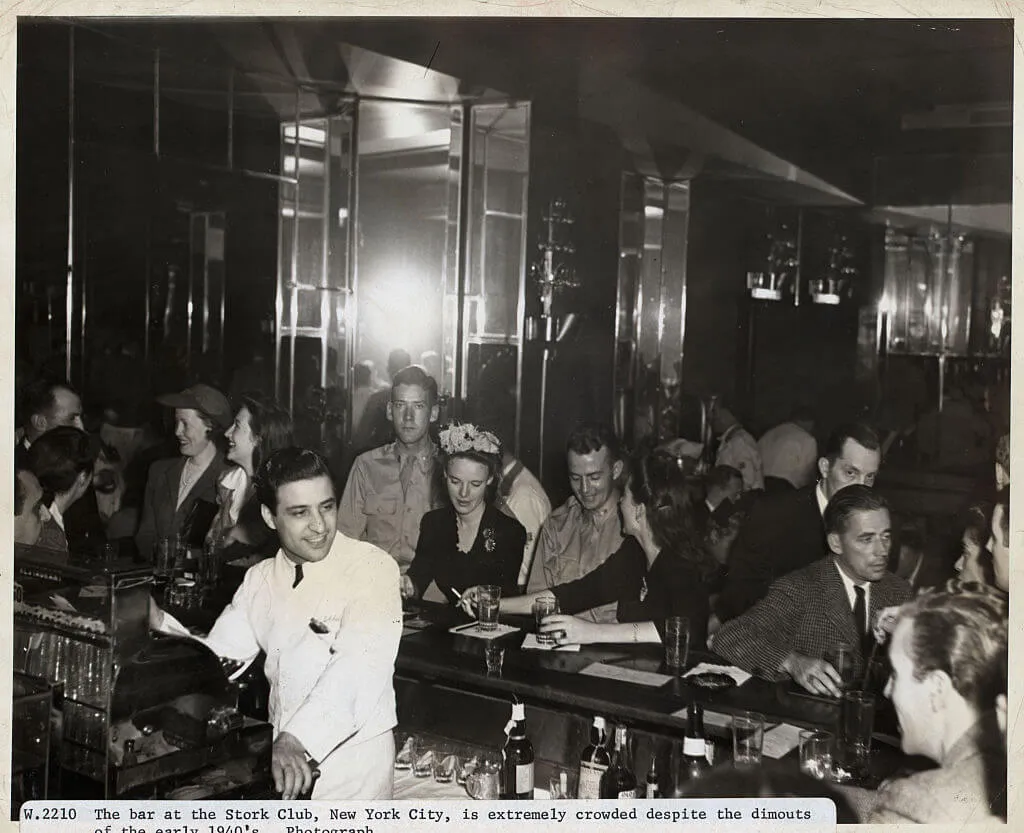
And here’s another famous speakeasy with an animal name. Sherman Billingsley, a bootlegger from Oklahoma, established The Stork Club on West 58th Street in Manhattan in 1929. The lavish hotspot eventually became one of the most prestigious nightclubs in the world, but began as an illegal operation. After it was raided by Prohibition agents in 1931, the club was moved to East 51st Street, and then later to East 53rd Street. Ernest Hemingway, the Kennedy family, Frank Sinatra, Lucille Ball and Desi Arnaz, and Grace Kelly were all frequent visitors to The Stork Club over the years. Unfortunately, the business was shuttered for good in 1965.
Women Started Drinking More

One of Prohibition’s effects was just the opposite of what the Dry Crusaders would have hoped for: women began drinking more alcohol. According to a Ken Burns PBS documentary called Prohibition, most women did not consume alcohol prior to the ban. As Drinking Diaries explains, “Before Prohibition, especially throughout the 1800s, women’s relationship to alcohol was an adversarial one, as they tried to stop their stressed-out husbands from drinking so much.” However, the era of the speakeasy was a draw for many, and lots of women started going out and drinking along with the men. In fact, rates of alcoholism among women rose during Prohibition.
Carrie Nation’s Destructive Hatchet Rampage

Carrie Nation had every reason to hate alcohol. The Kentucky woman’s first husband was a raging alcoholic who drank himself to death, leaving her to raise their son on her own. She later married a preacher and they moved to Kansas together. Although Nation did not live during Prohibition (she died in 1911), her new state of Kansas was the first in the country to ban booze. The state’s Prohibition was not strongly enforced, however, and many saloons and bars carried on their business as usual. Nation would have none of this, and became infamous for destroying saloons with a hatchet while singing hymns. She was eventually arrested 32 times for her "hatchetations." Standing at six feet tall, Nation's acts of destruction must have been quite a sight.
Bootlegging Gets A Boost
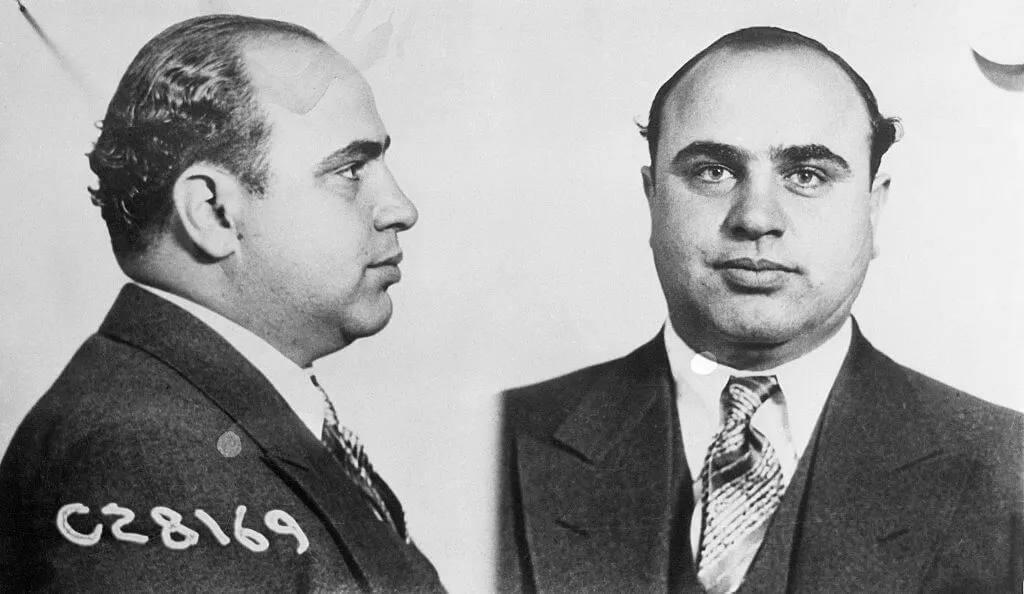
During Prohibition, there was a spike in crime associated with the bootlegging (booze smuggling) trade. Bootleggers made fortunes with their illegal operations. One of the most famous bootleggers was the notorious crime boss Al Capone, also known as “Scar Face,” who is said to have earned a whopping $60 million a year selling hooch illegally. As bootlegging grew in popularity, gang violence rose sharply. One of the most gruesome examples of this crime was 1929’s Saint Valentine's Day Massacre, in which Capone’s goons shot and killed seven members of a rival Irish American gang.
The Untouchables
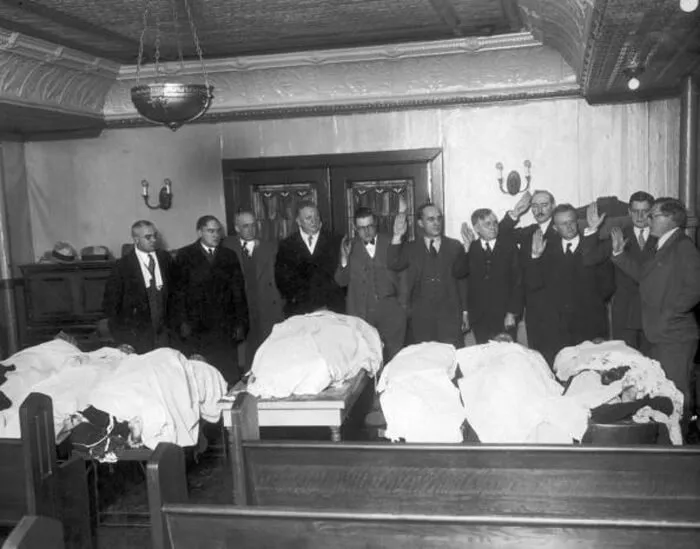
As a result of public outcry following the Saint Valentine's Day Massacre, a special team of U.S. federal law-enforcement was formed. Headed by Eliot Ness, the team aggressively pursued Al Capone by stringently enforcing Prohibition laws and repeatedly raiding the gangster’s hidden breweries. The group of agents became known as “The Untouchables” because they absolutely refused to accept bribes from Capone and other bootleggers. The above photo shows the special crime committee being sworn in, in the presence of the seven massacre victims. Capone was never charged with the killings, and the case remains unsolved today.
Lady Bootleggers

It turns out that the women were doing more than indulging in the drink… according to a 1922 article in the Boston Globe, members of the fairer sex were also contributing to the bootlegging trade. The article called women “champion booze hiders” and described the spike in “baby-carriage bootleggers” (who stashed their hooch in baby strollers). Female bootleggers apparently had numerous ways to conceal alcohol, including in their own customized clothing. “The most popular refuge picked by the woman for contraband booze is the pocket hidden beneath her skirt. A properly tailored dress will secrete a number of bottles about the person without the hazard of clinking glass or gurgling nozzles,” reported the Globe. Clever!
A Diverse Group
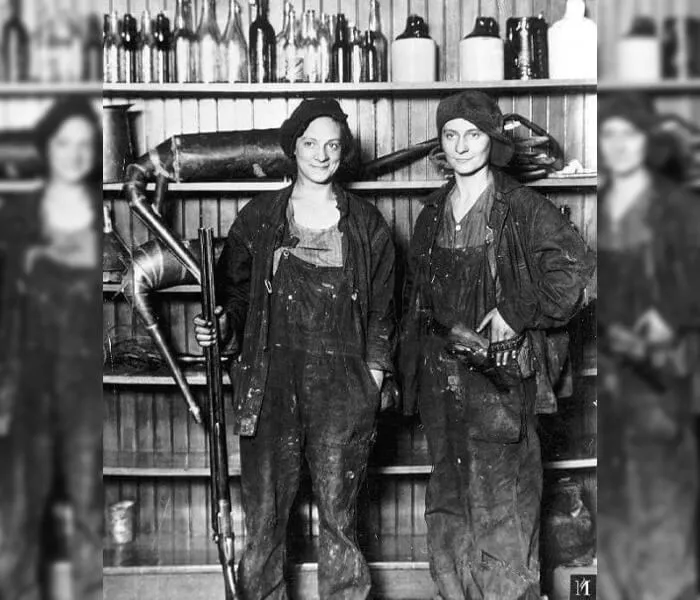
Women tended to make excellent bootleggers simply because police were less likely to stop or pull over a lady. Some states even had laws against searching women. Many female bootleggers made great fortunes dealing in hooch, and they were quite a diverse group. A journalist named Jack O’Donnell wrote this description of lady bootleggers: they "come from all stations and ranks of life – from the slums of New York’s lower East Side, exclusive homes in California, the pine-clad hills of Tennessee, the wind-swept plains of Texas, the sacred precincts of exclusive Washington.” He continued, “Some are bold, brainy and beautiful, some hard-boiled and homely, some white, some black, some brown. All are thorns in the sides of Prohibition Enforcement officials.”
Bold Footwear Styles

As we’ve seen, Prohibition led to some real creativity among those who were determined to have a drink despite the ban. Some of the silliest devices to come from Prohibition were “cow shoes.” The specially-designed shoes, which have cow hooves attached to the bottom, were a great help to moonshiners who wanted to hide their tracks while they were making hooch out in the woods. Police who raided the wooded areas where the moonshiners kept their distilleries only found animal prints, not human ones. Fun fact: in the 1904 Sherlock Holmes story “The Adventure of the Priory School,” similar shoes were worn by kidnappers to cover their tracks.
The Foundations of NASCAR

As we’ve seen, the bootlegging of moonshine during Prohibition was big business. One of the most vital components of bootlegging was transporting the moonshine to as many people as possible, but the endeavor had to go undetected by cops. The cars used in bootlegging had to look as subtle and inconspicuous “stock” as possible, even though the interiors of these cars were heavily specialized to reduce shock and had seats removed to make room for more product. They were also outfitted with fast engines. Moonshine runners were expert drivers and started racing each other for fun, even after Prohibition ended. These runners eventually became the earliest NASCAR drivers when the organization was founded in 1947.
Presidential Ties?
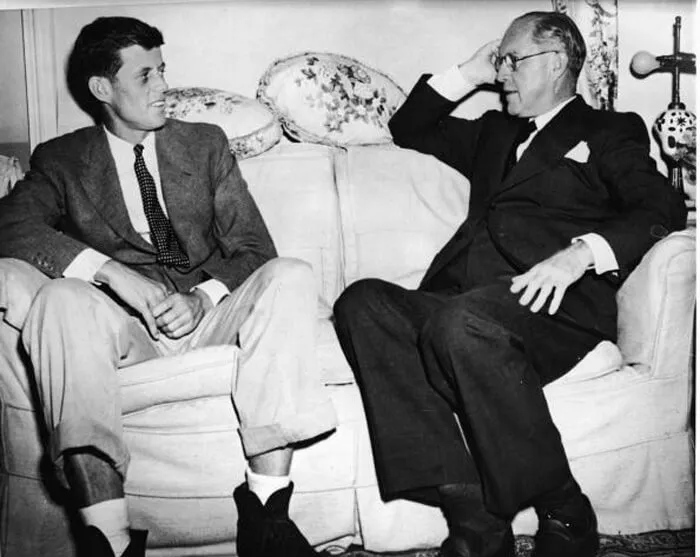
Many historians (and conspiracy theorists) have long suspected that President John F. Kennedy’s father might have been a liquor distributor during Prohibition. In fact, it’s speculated that Joseph P. Kennedy actually made the family fortune by bootlegging! One story about Kennedy certainly adds fuel to this rumor: when he attended his 10th reunion at Harvard during Prohibition, he provided all the liquor for the event. Also, Canadian officials conducting an investigation into liquor export taxes found his name on many of them. And some of Kennedy’s early confidantes claimed that he knew Al Capone. Although there is no hard evidence to support the fact that Kennedy might have been a bootlegger, it’s still a popular topic of conversation among many presidential historians.
A Speakeasy With Its Own Treehouse

Talk about Bohemian! The Krazy Kat Klub, located in Washington, D.C., was referred to by patron Jeb Alexander as “a gathering place for artists, musicians, atheists and professors.” The Washington Post said that the Krazy Kat was populated with "self-styled artists, poets and actors, and some who worked for the government by day and masqueraded as Bohemians by night." Patrons entered the establishment through an alley door, which held a sign reading “All soap abandon ye who enter here.” The popular club even had its own treehouse, which one had to access via a ladder. The Krazy Kat was raided numerous times during Prohibition.
The Krazy Kat Club

This is the alley entrance to the Krazy Kat, the D.C. speakeasy with a treehouse out back. Standing to the right, in the jaunty hat, is proprietor Cleon “Throck” Throckmorton. Throckmorton, an artist and theater set designer, simply refused to obey the puritan law of Prohibition and continued to run his club despite raids and arrests. The Krazy Kat also offered painting classes to its Bohemian patrons, and several photos of these lessons still exist. Today, the site where the Krazy Kat stood is now home to a gym. But several of Throckmorton’s works of art can be found gracing the walls of the New York City eatery Volare.
Pick Up Some Giggle Water While You’re Out!

As with most illegal activities, a new dictionary of slang arose around the booming bootlegging and speakeasy businesses. Alcohol was referenced in many creative ways, including tarantula juice, monkey rum, horse liniment, lap, coffin varnish, rot gut, hooch, giggle water, or white mule. A speakeasy or other establishment could be referred to as a Striped (or Blind) Pig, Blind Tiger, or Juice Joint. People who didn’t drink were called drys and teetotalers. And those who did drink were known as wets or boozehounds. Those who drank a LOT were called whales. The women pictured above were commonly known as flappers.
Alcatraz
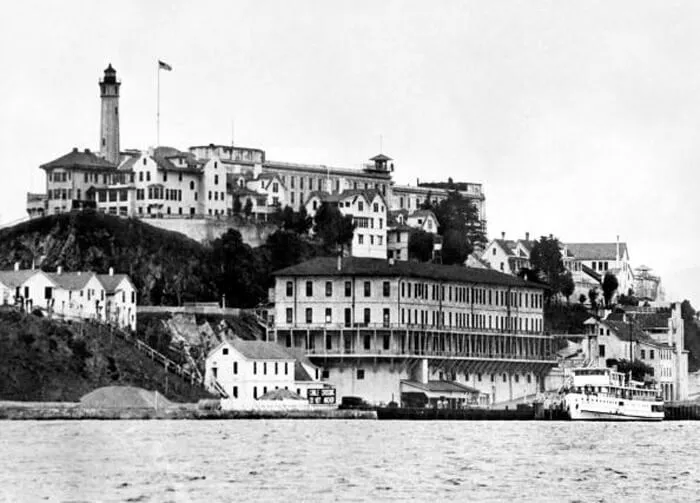
On December 5, 1933, Prohibition officially ended. Prisons nationwide were full of people who had turned to crime during the ban, and many of them were moved to a new federal penitentiary called Alcatraz, located on an island in San Francisco Bay. Many bootleggers met the end of their lives in the now-infamous prison, which is no longer in operation. Al Capone, eventually arrested for tax evasion, spent four years in Alcatraz, before eventually dying of syphilis in a hospital. Other famous prisoners to serve time there included James "Whitey" Bulger and Robert Stroud, aka the "Birdman of Alcatraz."









